Research Update
Our day began with a webinar about our research! We talked to thousands of students across the U.S. and beyond with the help of PolarTREC. Students asked great questions and it felt good to share the work we are doing with the public.
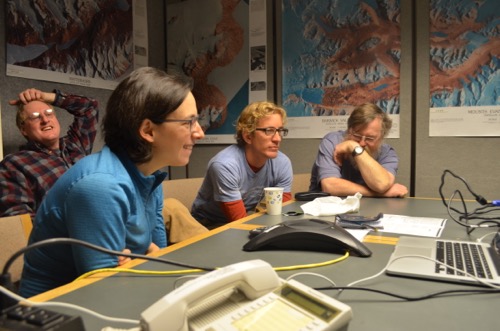
After the webinar, the research team collected sediment samples from around McMurdo Station. We went out to the area between Scott Base and McMurdo Station and collected sediment in areas where there has been development. After lunch the team went back out to the field to collect more sediment samples. I had to organize my dorm room for an inspection, since I am leaving tomorrow. I also took a tour of the utility plants here at McMurdo Station.
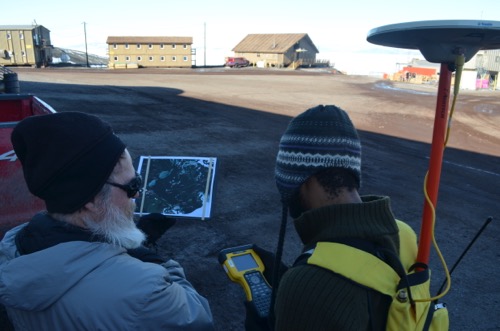
Although I will have time to help collect sediments tomorrow, it is sad to realize that the end of my time here is fast approaching. This afternoon I "bag dragged", which means I dropped off my checked bags for my flight tomorrow. Although there is always a chance my flight will be cancelled, I am scheduled to fly out at 6 p.m. tomorrow evening.
The Utilities of McMurdo Station
A lot of work is done behind the scenes to make research run smoothly and our lives comfortable at McMurdo Station. The utilities play a large role in this and today I toured three utility stations.
The Power Plant
Ron, who is the head of the utilities department here, was available to give me and other interested McMurdo residents a tour of the power plant. The power plant was commissioned in 2010 and keeps electricity flowing for both McMurdo Station and neighboring Scott Base. McMurdo station runs mostly on power from fuel. Wind power from Scott Bases' three wind turbines is also used to supplement the power plant. The plant uses jet fuel to power one to two generators at a time. The generators act like other machines you may be familiar with, such as a car engines. Pistons move due to pressure from ignition and combustion, allowing electricity to be created as a magnet moves around a wire.

Most electronics require about 110 Volts of electricity to operate in the U.S. The generator puts out a voltage of 4160 Volts. This energy gets moved to a switch gear where the voltage is changed so that it can be used at the station.
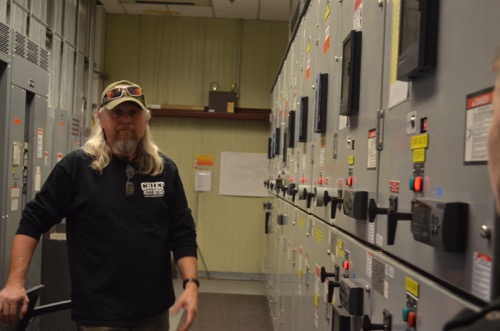
A student in this morning's webinar asked how much fuel we use here. When I asked Ron, he told me they are currently using 60 gallons an hour. It is difficult to estimate how many gallons are used annually since the rate of fuel being burned changes as more people come to the station.
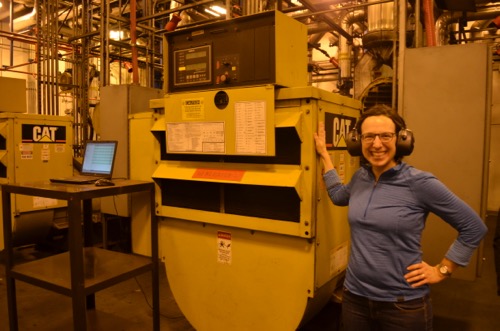
Although we use a lot of fuel to run McMurdo Station, the plant is also trying to conserve energy. Just like in a car, burning fuel creates hot exhaust. That heat is trapped and used to heat dorm rooms, as well as Building 155--the big blue building which houses the cafeteria and other important operations. The plant is continually trying find ways to conserve energy.
Math Connection
A typical barrel of oil holds 42 gallons. How many barrels of oil are burned in a day at the current rate?
The Water Processing Plant
After learning about the power plant, we met Al Berggren at the water processing plant. Al has been coming to Antarctica for over 20 years. He makes sure the fresh water at McMurdo Station is filtered correctly. It is taken in as salt water from McMurdo Sound and purified to become drinkable water through reverse osmosis. In this process, salt water is forced through small openings, trapping the salt to create filtered water. To get the water filtered, salt water has to be pushed through many layers of semipermeable membranes at a minimum pressure of 300 pounds per square inch. At McMurdo Station, water is pushed through the membranes at around 700 pounds per square inch to get 27 gallons of drinkable water per minute.
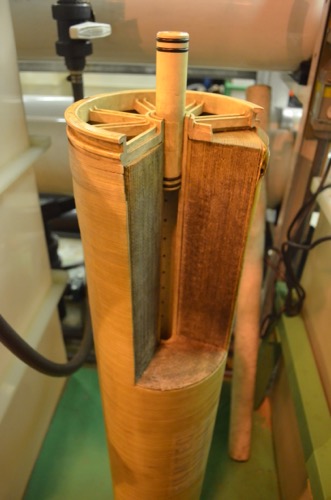
The sea water is 28 degrees Fahrenheit as it comes into the station and warms to 37 degrees Fahrenheit. First sediments are filtered out of the water, then the salt is filtered out. Chlorine is added to the water to disinfect it and soda ash is added to get the water to a correct pH level. The station is capable of making 400,000 gallons of water a day, which is stored in giant containers in the station.

Critical Thinking
Why is salt water warmed up before it is filtered? What would happen to the salt water as it becomes filtered if it wasn't warmed up?
The Waste Water Treatment Plant
The last plant that we visited on our tour was the Waste Water Treatment Plant. When water goes down a drain here, whether it is the toilet or the sink, it ends up at the plant.
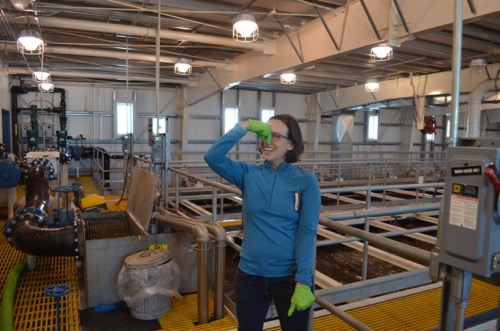
Solid waste goes through a series of steps to get processed before it gets shipped back to the U.S. and incinerated. The first step is for waste to get masticated, or chewed up. It then flows through a screen which helps remove objects that are not waste. Phones, pens and other random objects have been found in the screen! Afterwards, it gets aerated--air mixes with the waste and ammonia and nitrogen are removed. The waste water then travels to a clarified water container, where solid waste settles down and the water above it moves along to be treated and returned to McMurdo Sound. The solid waste that has settled out gets moved into a digester. The digester continues to aerate and stabilize the waste with the help of microorganisms until it gets put through a Belt Filter Press, which squeezes excess water out of the waste, allowing it to be packed into containers and shipped to the U.S. to be incinerated.
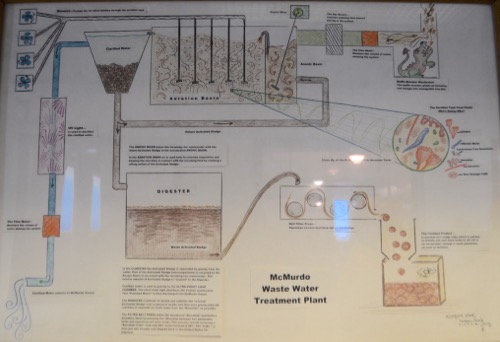
My favorite part of the waste water treatment plant tour was seeing the microorganisms that help digest and decompose the waste. Yubecca, a biologist and plant operator, showed us the microorganisms that live in the waste and help break it down.
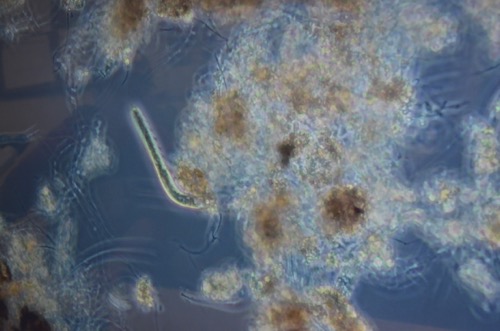
It was really helpful to see how energy, water and waste get used and processed at McMurdo Station. Much of my team's research is connected to these issues and it helped me better understand the cycle of waste and energy here.
Life in Antarctica
With 8,000 miles between us and the United States, you may think it is difficult to listen to some familiar music on the radio. However, McMurdo Station has two radio stations! One streams news and shows from NPR and the other station is hosted live in Building 155--the big blue building here at McMurdo.
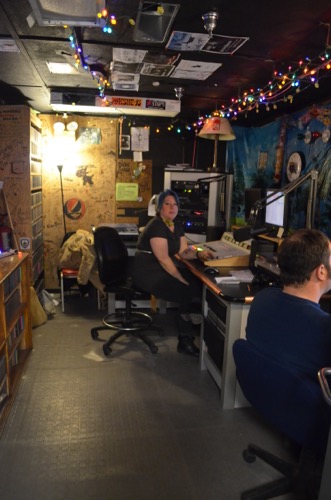
Ice Picture of the Day
Today's Ice POD is about the diversity in the waste water! Click here to download a PowerPoint Presentation: 22_icepod.pptx
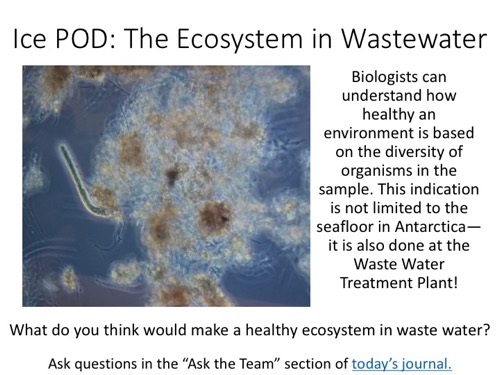
Brought to you by...
Today's journal is brought to you by Ms. Kreuter's class at Nittany Valley Charter School in State College, Pennsylvania.
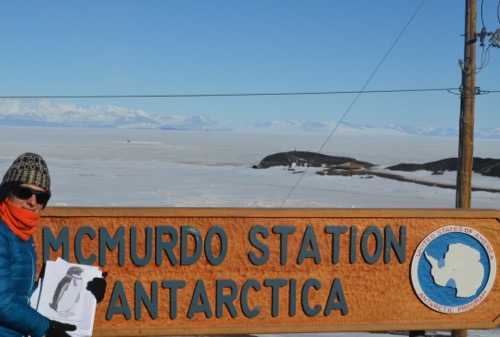
| Attachment | Size |
|---|---|
| 22_icepod.pptx250.92 KB | 250.92 KB |

Comments